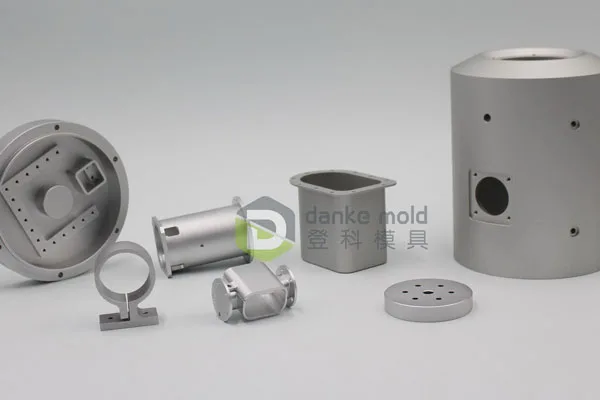Heritage crafts are a vital link to our cultural past, representing skills and artistry passed down through generations. Yet, with the rise of mass production and changing consumer habits, many traditional techniques face extinction. Low volume Manufacturing offers a solution, combining the efficiency of modern technology with the craftsmanship of traditional methods. This approach empowers artisans, preserves cultural heritage, and meets the demands of today’s global market.
The Role of Low-Volume Manufacturing in Supporting Artisans
Bridging Tradition and Innovation
Low-volume manufacturing serves as a bridge between tradition and innovation. By producing small batches of goods, artisans can maintain the authenticity of their craft while incorporating modern tools to enhance precision and efficiency. This method allows for:
- Limited runs of high-quality, handcrafted items.
- Integration of traditional techniques with advanced technology.
- Flexibility to experiment and adapt designs without committing to mass production.
For example, artisans working with pottery, textiles, or metalwork can use tools like CNC machines or 3D printers to refine intricate details, ensuring consistency while preserving the essence of their craft.
Advantages of Low-Volume Manufacturing for Heritage Crafts
Customization and Personalization
Low-volume manufacturing has the capability of customizing, which is one of its biggest benefits. Unlike mass production, which prioritizes quantity, this approach focuses on creating unique, personalized pieces. For artisans, this means:
- Catering to niche markets that value authenticity and individuality.
- Offering bespoke products tailored to customer preferences.
- Maintaining a direct connection with their audience fosters trust and loyalty.
Using digital design tools like CAD (Computer-Aided Design) software, artisans can easily adjust their designs, ensuring each piece reflects their vision and the customer’s desires.
Preserving Craftsmanship in the Digital Age
Traditional crafts often involve labor-intensive processes that take years to master. Low-volume manufacturing enables artisans to streamline these processes without compromising quality. Advanced technologies such as:
- Laser cutting for intricate patterns.
- 3D printing for quick prototyping and low-volume manufacturing.
- CNC machining for precise, repeatable designs.
These tools reduce manual effort, save time, and allow artisans to focus on the artistic aspects of their work.
Challenges and Solutions in Combining Technology with Heritage Crafts
Balancing Authenticity and Efficiency
One common concern among artisans is maintaining the authenticity of their craft while embracing modern technology. Low Volume Manufacturing strikes a balance by:
- Ensuring that traditional methods remain central to the process.
- Using technology to enhance, not replace, artisanal skills.
- Providing tools that complement rather than overshadow the human touch.
Overcoming Cost Barriers
Investing in advanced manufacturing tools can be daunting for small-scale artisans. Collaborative workshops, shared maker spaces, and partnerships with manufacturers specializing in Low-Volume Manufacturing provide cost-effective solutions. These initiatives allow artisans to access cutting-edge equipment without the burden of ownership.

CNC machining parts
Modern Marketing and Global Reach for Heritage Crafts
Leveraging Online Platforms
The digital age has opened up new avenues for artisans to market their work. E-commerce platforms, social media, and online marketplaces have revolutionized how heritage crafts reach consumers. Benefits include:
- Global visibility for handcrafted products.
- Opportunities to tell the story behind each piece, connecting emotionally with buyers.
- Direct feedback from customers to improve and refine offerings.
Using Technology to Build Relationships
With Low Volume Manufacturing, artisans can meet the demand for personalized products while engaging directly with their audience. Features like online customization tools and virtual workshops allow customers to participate in the creative process, fostering deeper connections.
Real-World Applications of Low-Volume Manufacturing in Heritage Crafts
Textile Artisans
Traditional weavers and textile artists can use Low Volume Manufacturing to:
- Create limited-edition collections with consistent quality.
- Experiment with new patterns and materials using digital design software.
- Scale production to meet demand without compromising craftsmanship.
Ceramic Makers
Ceramic artisans benefit from technologies like 3D modeling and precision molding, enabling them to:
- Produce intricate designs efficiently.
- Ensure uniformity in sets of handcrafted items.
- Offer custom pieces that cater to specific customer needs.
Metalworkers and Jewelry Designers
For metalwork and jewelry, Low Volume Manufacturing provides:
- Tools to achieve complex, precise designs.
- Flexibility to create prototypes and iterate quickly.
- The ability to merge traditional techniques with innovative materials.
How Low-Volume Manufacturing Sustains Cultural Heritage
By combining tradition with modernity, Low Volume Manufacturing not only sustains cultural heritage but also makes it accessible to a broader audience. This approach:
- Preserves unique skills and techniques for future generations.
- Creates sustainable livelihoods for artisans by meeting contemporary market demands.
- Showcases the value of handcrafted goods in an era dominated by mass production.
A Call to Action
If you are an artisan looking to preserve your craft or a business seeking to support traditional craftsmanship, consider partnering with Danke Mold. We specialize in Low Volume Manufacturing solutions that empower artisans to embrace modern technology while staying true to their heritage. Let’s work together to preserve the beauty and authenticity of traditional crafts for future generations.
